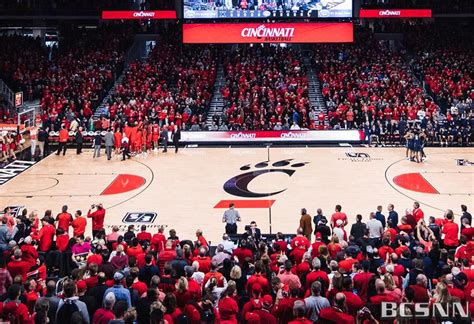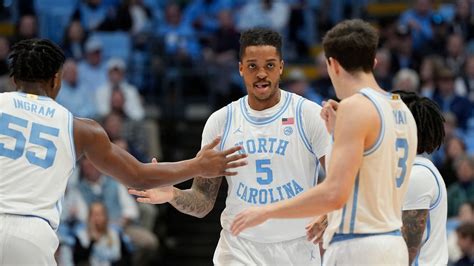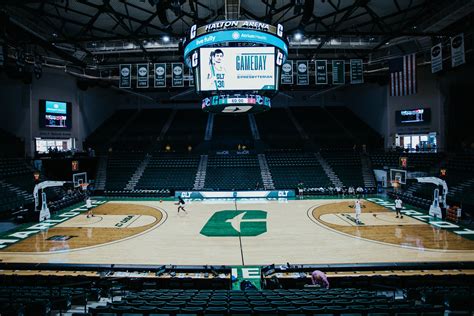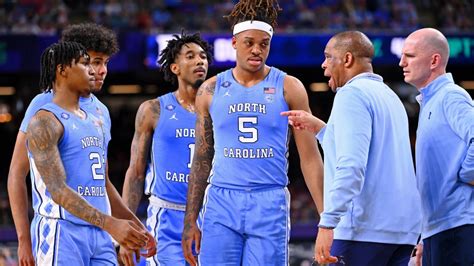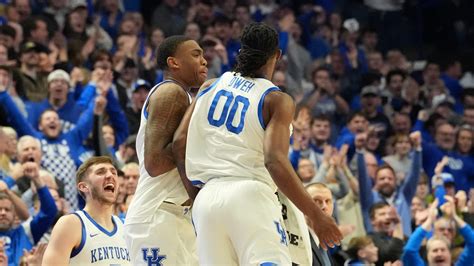In basketball, positions refer to the designated roles and responsibilities of players on the court. Each position demands a specific skill set and plays a crucial part in team strategy and execution.
Positions in basketball are not just about organizing players on the court; they are fundamental to the game’s dynamics and success. Understanding these positions enhances strategic decision-making, player development, and overall appreciation for the sport.
Let’s dive into the main article topics to explore the intricacies and significance of positions in basketball.
Positions in Basketball
Positions in basketball are essential to the game’s strategy and execution. They define roles, responsibilities, and skill sets of players on the court.
- Point Guard: Leader, ball-handler, playmaker
- Shooting Guard: Perimeter scorer, defender
- Small Forward: Versatile scorer, defender, rebounder
- Power Forward: Inside scorer, rebounder, defender
- Center: Rebounder, defender, inside presence
- Lineups: Combinations of positions for specific strategies
- Defensive Positions: Man-to-man, zone, help defense
- Player Development: Training and practice to enhance skills for specific positions
These key aspects are interconnected and influence each other. For instance, the point guard’s ball-handling ability affects the team’s offensive strategy, while the center’s rebounding prowess impacts defensive positioning. Understanding these aspects provides a deeper appreciation for the complexities and dynamics of basketball.
Point Guard
In basketball, the point guard position is pivotal to the team’s success. As the leader on the court, the point guard orchestrates the offense, controls the tempo, and makes crucial decisions. Their exceptional ball-handling skills allow them to navigate through defenders and create scoring opportunities for themselves and their teammates.
The point guard’s role extends beyond offensive playmaking. They are often the team’s primary defender against the opposing team’s lead guard. Their agility and anticipation enable them to disrupt passing lanes, force turnovers, and initiate fast breaks.
Understanding the point guard’s multifaceted role is essential for comprehending the dynamics of basketball. Their ability to lead, control the pace, and create scoring chances has a profound impact on the team’s overall performance. Recognizing the importance of the point guard position empowers coaches, players, and fans to appreciate the intricacies and strategies of the game.
Shooting Guard
The shooting guard position in basketball holds immense significance within the broader context of team dynamics and strategy. As perimeter scorers, shooting guards possess exceptional shooting proficiency, enabling them to create scoring opportunities from beyond the three-point line and mid-range areas. Their ability to knock down shots consistently stretches the defense, creating space for teammates to operate inside the paint.
In addition to their offensive prowess, shooting guards also play a crucial defensive role. Their agility and lateral quickness make them formidable defenders against opposing guards. They often guard the opposing team’s best perimeter player, using their length and athleticism to disrupt their rhythm and force turnovers.
Understanding the vital role of shooting guards in both offense and defense is essential for comprehending the complexities of basketball. Their ability to score efficiently from the perimeter and guard against opposing guards makes them indispensable components of any successful team. This understanding empowers coaches, players, and fans to appreciate the intricate balance and interdependence of positions within the game.
Small Forward
In the dynamic landscape of basketball, the small forward position occupies a unique and versatile space, embodying a blend of scoring prowess, defensive tenacity, and rebounding ability. As an integral part of team strategy and execution, the small forward’s role extends beyond individual performance, influencing the overall balance and effectiveness of the team.
- Offensive Versatility: Small forwards are typically equipped with a diverse offensive skillset, capable of creating their own shots, driving to the basket, and knocking down shots from mid-range and beyond the three-point line. Their versatility keeps defenses honest, creating opportunities for teammates and opening up the court.
- Defensive Presence: On the defensive end, small forwards often match up against the opposing team’s best wing players. Their length, athleticism, and defensive instincts allow them to disrupt passing lanes, force turnovers, and contest shots effectively.
- Rebounding Prowess: Small forwards contribute significantly to their team’s rebounding efforts, using their size and leaping ability to secure rebounds on both ends of the court. Their rebounding prowess gives their team second chances on offense and prevents the opposition from gaining easy scoring opportunities.
- Transitional Play: Small forwards often excel in transitional play, utilizing their speed and ball-handling abilities to lead fast breaks and create scoring chances. Their ability to push the pace and convert in transition can give their team a significant advantage.
The multifaceted nature of the small forward position highlights the interconnectedness of roles within basketball. Their ability to contribute in various aspects of the game makes them invaluable assets to any team, showcasing the importance of positional diversity and the strategic nuances that shape the sport.
Power Forward
Within the dynamic landscape of basketball positions, the power forward occupies a pivotal role, seamlessly blending inside scoring prowess, rebounding dominance, and defensive versatility. This unique combination of skills makes the power forward an indispensable component of team strategy and execution.
As inside scorers, power forwards possess a refined arsenal of post moves, enabling them to create high-percentage scoring opportunities near the basket. Their size and strength allow them to battle in the paint, drawing fouls and converting at a high rate. Their ability to score consistently from close range opens up the court for teammates and forces defenses to collapse inward, creating scoring opportunities for others.
On the defensive end, power forwards serve as the anchor of the team’s interior defense. Their size and athleticism make them formidable rim protectors, deterring opponents from driving into the paint. They also possess excellent rebounding instincts, securing both offensive and defensive rebounds to give their team second-chance opportunities and prevent the opposition from gaining easy put-backs.
The power forward position is a true embodiment of versatility and impact. Their ability to score inside, rebound effectively, and defend tenaciously makes them invaluable assets to any team. Understanding the role and responsibilities of the power forward provides a deeper appreciation for the intricacies and strategies that shape the game of basketball.
Center
Within the dynamic realm of basketball, the center position stands as a cornerstone of team strategy and execution. As rebounders, defenders, and imposing inside presences, centers play a multifaceted role that profoundly impacts the outcome of games. Their unique combination of size, strength, and skill makes them indispensable to any team’s success.
- Rebounding Dominance: Centers are the primary rebounders on both ends of the court. Their height and wingspan allow them to secure rebounds over smaller opponents, giving their team second-chance opportunities and preventing the opposition from gaining easy put-backs.
- Defensive Anchor: As the last line of defense, centers protect the paint, deterring opponents from driving into the lane. Their size and strength make them formidable rim protectors, capable of altering shots and forcing turnovers.
- Inside Scoring Threat: Centers are often a team’s primary scoring option near the basket. Their post moves and finishing ability allow them to create high-percentage scoring opportunities, drawing fouls and converting at a high rate.
- Court Vision and Passing: Despite their size, many centers possess excellent court vision and passing skills. They can find open teammates on the perimeter, creating scoring chances and facilitating the team’s offense.
The center position is a true embodiment of versatility and impact. Their ability to rebound effectively, defend tenaciously, and score inside makes them invaluable assets to any team. Understanding the role and responsibilities of the center provides a deeper appreciation for the intricacies and strategies that shape the game of basketball.
Lineups
In basketball, lineups refer to the specific combinations of positions on the court at any given time. These combinations are carefully crafted by coaches to align with the team’s overall strategy and the strengths and weaknesses of both their own team and their opponents.
The connection between lineups and positions in basketball is fundamental. Each position has a unique role and set of responsibilities, and the of these positions on the court determines the team’s style of play. For example, a lineup with two point guards may indicate a team that wants to play a fast-paced, up-tempo game, while a lineup with two centers may suggest a team that plans to focus on defense and rebounding.
Understanding the connection between lineups and positions is crucial for coaches, players, and fans alike. Coaches use this knowledge to create lineups that maximize their team’s potential and exploit their opponents’ weaknesses. Players need to be familiar with the different roles and responsibilities of each position in order to execute the team’s game plan effectively. And fans can gain a deeper appreciation for the game by understanding how lineups and positions impact the flow and outcome of a basketball game.
Defensive Positions
Defensive positioning is a crucial aspect of basketball, and the choice of defensive strategy depends heavily on the positions of the players on the court. There are three main types of defensive positions: man-to-man, zone, and help defense.
- Man-to-man defense: In man-to-man defense, each defensive player is responsible for guarding a specific offensive player. This type of defense requires good communication and coordination between players, as they must be able to switch assignments and help each other out when needed.
- Zone defense: In zone defense, players are assigned to guard specific areas of the court, rather than specific players. This type of defense can be effective against teams that like to move the ball around and create open shots.
- Help defense: Help defense is a defensive strategy in which players provide assistance to teammates who are guarding the ball. This can involve double-teaming the ball handler, providing help from the weak side, or rotating to cover open players.
The choice of defensive position depends on a number of factors, including the strengths and weaknesses of the opposing team, the personnel available, and the game situation. Understanding the connection between defensive positions and positions in basketball is essential for coaches and players alike, as it allows them to develop and execute effective defensive strategies.
Player Development
In basketball, the connection between “Player Development: Training and practice to enhance skills for specific positions” and “positions in basketball” is paramount to team success. Mastering the fundamentals and honing specific skills for each position are crucial for maximizing individual and collective performance on the court.
Effective player development involves tailored training regimens that focus on enhancing the unique skill sets required for each position. For instance, point guards need to develop exceptional ball-handling, court vision, and leadership abilities. Shooting guards emphasize perimeter shooting, defensive agility, and the capacity to create scoring opportunities. Small forwards strive for versatility, combining scoring prowess with rebounding and defensive contributions.
Understanding this connection enables coaches to design targeted development plans that address the specific needs of players in each position. By engaging in position-specific training and practice, players refine their techniques, improve their decision-making, and enhance their overall effectiveness on the court. This, in turn, elevates team performance and strategic execution during competitive matches.
FAQs on Positions in Basketball
This section addresses common questions and misconceptions surrounding positions in basketball, providing clear and informative answers.
Question 1: What are the key responsibilities of a point guard?
Point guards are the quarterbacks of the basketball team, responsible for controlling the pace and flow of the offense. They initiate plays, distribute the ball, and create scoring opportunities for themselves and their teammates.
Question 2: What distinguishes a shooting guard from other positions?
Shooting guards are primarily known for their perimeter shooting prowess. They excel at creating their own shot, knocking down jumpers, and providing a scoring threat from beyond the arc.
Question 3: What is the primary role of a small forward?
Small forwards are versatile players who contribute in multiple facets of the game. They combine scoring, rebounding, and defensive abilities, making them valuable all-around players.
Question 4: How do power forwards impact the game?
Power forwards are typically strong and physical players who operate near the basket. They are responsible for rebounding, scoring in the paint, and providing a defensive presence in the post.
Question 5: What is the significance of the center position?
Centers are the anchors of the defense, protecting the rim and rebounding effectively. They also contribute to the offense through scoring in the post and setting screens for teammates.
Question 6: How do different positions interact on the court?
In basketball, each position has a specific role, but they all work together to achieve team success. Players must understand their responsibilities and complement each other’s strengths to execute effective offensive and defensive strategies.
These FAQs provide a comprehensive understanding of the various positions in basketball and their significance on the court.
Continue reading to delve deeper into the intricacies of each position and its impact on team dynamics.
In basketball, mastering positions is crucial for team success. Here are essential tips to enhance your understanding and execution of each position:
Tip 1: Point Guard - The Orchestrator
- Develop exceptional ball-handling skills and court vision.
- Practice controlling the tempo of the offense and setting up teammates.
- Enhance leadership abilities to guide the team and make quick decisions.
Tip 2: Shooting Guard - The Perimeter Threat
- Master various shooting techniques, including catch-and-shoot and off-the-dribble shots.
- Improve defensive agility to guard opposing guards effectively.
- Develop the ability to create scoring opportunities for yourself and others.
Tip 3: Small Forward - The Versatile All-Arounder
- Enhance scoring skills from both inside and outside the paint.
- Develop strong rebounding abilities to contribute on both ends of the court.
- Improve defensive versatility to guard multiple positions effectively.
Tip 4: Power Forward - The Inside Dominator
- Develop a strong post game and effective low-post moves.
- Master rebounding techniques to secure possession and create second-chance opportunities.
- Enhance defensive presence in the paint to deter opponents and protect the rim.
Tip 5: Center - The Anchor of Defense
- Develop exceptional rebounding skills to control the boards.
- Master defensive positioning and rim protection to deter opponents from scoring.
- Enhance post moves and scoring ability to contribute offensively.
Understanding these tips and applying them to your game can significantly improve your performance and contribute to your team’s success. By mastering the nuances of each position, you can execute effective strategies, exploit mismatches, and elevate your overall basketball abilities.
Embrace the challenge of mastering your position and strive for excellence on the court.
Conclusion
In basketball, positions serve as fundamental pillars, defining roles, responsibilities, and strategic approaches on the court. Exploring these positions unveils their intricate connections to team dynamics, player development, and the overall flow of the game.
Understanding the nuances of each position empowers players, coaches, and enthusiasts to appreciate the delicate balance and interdependence within basketball. By mastering their respective roles, players unlock their potential, amplify their impact, and contribute to the collective success of their team. As the game evolves, the significance of positions in basketball remains steadfast, providing a framework for effective execution and strategic decision-making.
Youtube Video:

